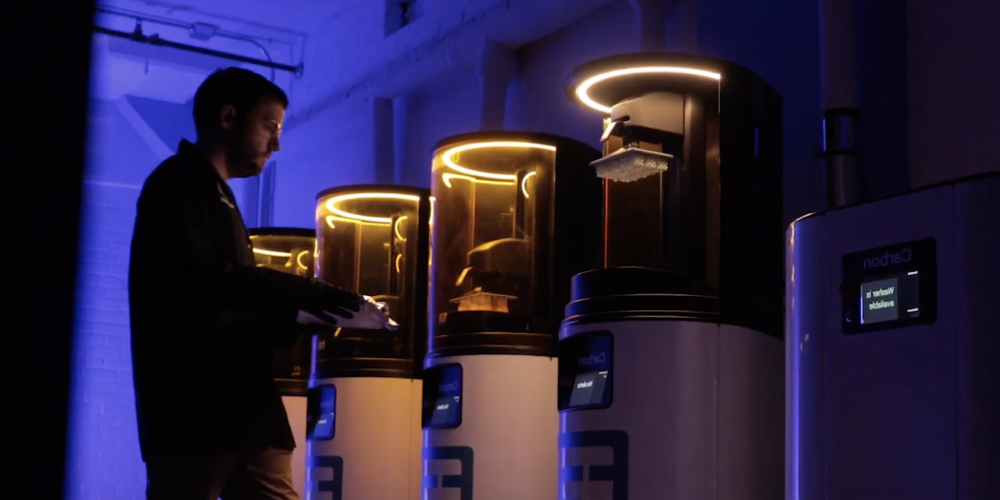This is an original article from Fast Radius.

When people think of additive manufacturing (AM), the first thing that often comes to mind is prototyping. When you need to iterate on a design quickly without the constraints of traditional manufacturing runs, AM works well because there’s no hard tooling involved, making rapid iteration possible.
But it’s not just companies in the prototyping phase of product development that stand to gain from additive manufacturing. There are four other specific use cases where the case for additive is particularly easy to make due to its ability to surpass traditional manufacturing methods in speed, efficiency, quality, and cost savings.
Low-volume production runs
With traditional manufacturing, you have to produce end-use parts in large volumes to drive down the unit cost. When you’re making parts in the range of tens or hundreds of thousands, it often makes sense to use legacy processes. However, what happens if you plan to have a production run that’s in the hundreds or low thousands? Traditional manufacturing might not be feasible because of the high capital expenses.
Take injection molding, for example. Typical tooling costs can be $20 to 110K before you even get into production. But with AM, there is no capital expense required for tooling, allowing you to scale part production to exactly meet market demand. Parts can be produced in much smaller numbers, without minimum order quantities, allowing you to lower manufacturing costs and reduce inventory.
Consolidated parts
In addition to economic advantages, AM has significant design benefits for certain types of parts that have long been considered “unmakeable” — for instance, manufacturing complex parts as single consolidated units. Parts with very complex geometries, such as lattice structures, or even moving assemblies are possible with AM. You can make a part to exactly fit its use, designing for function compared to the “old way” of designing to adhere to manufacturing restrictions.
This ability to create simplified, more efficient part designs has a lot of advantages:
- Less money spent on assembly, and decreased risk of hidden cost and project delays that can accompany complex parts, resulting in lower overall projection costs.
- Less material used — AM can often accomplish up to a 70 percent decrease in materials.
- Lower risk — less risk of a supplier running out of one part and decreased risk of part failure.
For instance, one manufacturer worked with Fast Radius and Carbon® on the design of its SILQ chair, winner of the prestigious Innovation Award at the 2018 NeoCon. Arm caps have traditionally been manufactured as three separate parts and assembled later. But the manufacturer and Fast Radius enabled the printing of the arm cap as one contiguous unit designed with a lattice structure to reduce material usage substantially.
Parts that require customization
This company also took advantage of another benefit of additive manufacturing in the design of the SILQ chair arm cap: the ability to customize design elements quickly and at a very small scale. Corporate clients can personalize the arm caps on the chairs they order by changing the texture, adding a logo, or including variable serial numbers.
Without the costs and time constraints of initial tooling, designs can be tailored to specific part applications or consumer needs, down to the single unit. This makes it highly useful for customizing both functionality and aesthetic treatment, including branding. Since more than three-quarters of consumers are willing to pay 10 percent more for customized furniture, this ability to personalize pieces down to a single unit gives companies an added edge in the market.
Small parts
Smaller components — around the size of a softball or smaller — are particularly efficient to manufacture at very low volumes with AM. And as you scale up production on very small parts, you can see break-even curves over traditional injection molding in the thousands or sometimes tens of thousands. In fact, for small plastic parts the size of a ping pong ball or less, it often makes little economic sense to use traditional manufacturing entirely.
A Chicago-based company that produces upper limb prostheses, enlisted Fast Radius to refine the second generation of its flagship product. This medical device uses electrical pattern recognition to enable people who have lost their upper limbs to fully control movement in their prosthetic arms.
Two of the parts integral to the system are the calibration button and can plugs, both very small, with intricate details, including a specific textural finish the button requires for precise user interaction. Using additive manufacturing to make these parts means the design is under explicit control, and the throughput is still impressive — 135 buttons (11x11x5.5 mm.) in 35 minutes, and 848 can plugs (1.75×5.2×3.2 mm.) in 23 minutes.
If any of the above scenarios make sense for your manufacturing needs, it’s time to consider additive manufacturing. Let’s talk about how to refine your manufacturing processes and improve your part quality and bottom line.

Apply to be on the cutting-edge of automation technology to solve productivity and innovation challenges.
Funded through the I-SMART program, 80 companies will be chosen to identify, adapt, and implement automation technologies - building core strengths that will enable them to rebound even stronger from the pandemic. Depending on your identified needs and priorities your company could receive:
- Business case for robotics and flexible automation technologies
- Technology deployment roadmap
- Vendor selection services
- Implementation and process services
- Overall project management




